HOME IMPROVEMENT
The History Behind UC Berkeley’s Architecture
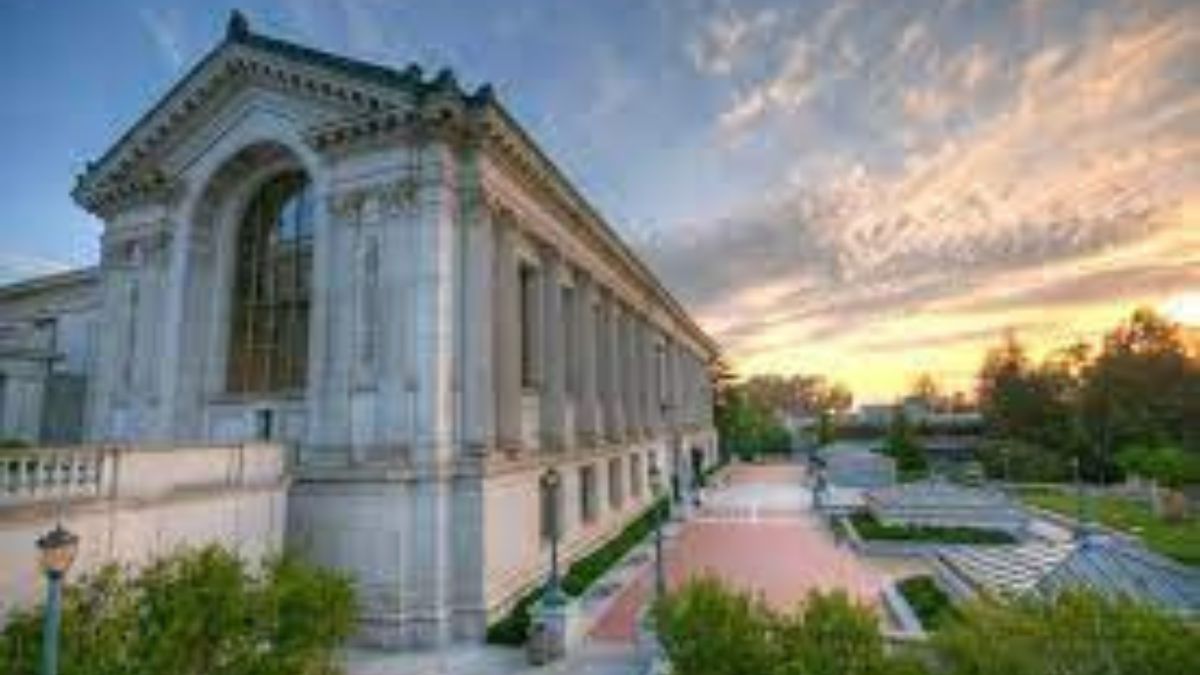
When I was in high school, I decided I wanted to attend a college with breathtaking architecture — not necessarily a well-known college, or a good college, but one with jaw-dropping buildings and awe-inspiring libraries. Growing up in the suburbs, where the landscape is flat and lifeless and the buildings look identical, I craved architecture that was diverse in style and rich in history. This dream was realized when I was accepted to Berkeley. The first time I visited campus, I fell in love with its buildings right away.
The history behind UC Berkeley’s architecture is more intriguing and complex than most people realize. Opened in 1855, UC Berkeley was originally just a two-acre campus in Oakland, then called the College of California. At the time, what we know today as the city of Berkeley was nothing more than wilderness, punctuated by the occasional piece of farmland, just a few miles north of Oakland. But in 1868, the state of California bought a small plot of land in Berkeley and officially chartered the University of California. Frederick Law Olmsted, who is famous for designing New York’s Central Park, was hired to design the new campus in Berkeley. This campus looked nothing like the campus we know today — it had a grand total of 40 students, 10 professors, and two buildings: North Hall, which has since been demolished, and South Hall, which is still standing today. South Hall’s architectural style is distinct from most other buildings on campus: its brick facade, ornamental moldings, and strikingly shaped windows are evidence of the Second Empire architectural style, which flourished in the latter half of the nineteenth century and was notable for its opulence and Gothic influence.
As UC Berkeley grew larger throughout the late 1800s, so did its need for more buildings. What we now know as some of the most iconic buildings on campus were actually the result of an architectural competition financed by philanthropist Phoebe Hearst in 1898. The International Competition for the Phoebe Hearst International Plan for the University of California, as it was called, was borne out of the rivalry between the prominent Stanford and Hearst families — two extremely wealthy and distinctly old money families from Northern California. Soon after the Stanford family founded Stanford University, the Hearst family adopted the University of California and committed to funding it. When the competition’s winner Émile Bénard declined to be appointed as the campus’ architect, fourth-place winner John Galen Howard was tasked with implementing Bénard’s plan for the campus’ design.
Howard was responsible for the distinct classical style of numerous campus buildings and landmarks, from the elaborate patterns of Sather Gate to the striking Grecian columns of Wheeler Hall. Howard utilized the Beaux-Arts classical style, which was taught at the École des Beaux-Arts in Paris where he was educated in the early 1890s. This architectural style is notable for its emphasis on neoclassical, Gothic, and Renaissance designs. One of Howard’s most impressive buildings is Doe Library, one of the defining landmarks of Berkeley’s campus. The library was imagined as both the physical and intellectual center of campus and has strong Greco-Roman influences, seen in its twelve imposing columns and marbled interior. The reading rooms inside Doe, with their intricately carved ceilings, ornate wood paneling, and towering windows, offer the feel of a traditional European university.
Howard also designed what is arguably Berkeley’s most famous landmark, Sather Tower. Often referred to as “the Campanile,” due to its resemblance to the Campanile di San Marco in Italy, Sather Tower is the third-tallest clock tower in the world and, notably, houses numerous fossils from prehistoric times due to its cool and dry interior. Sather Tower is also notable for its location — on a clear day, one can stand on the steps in front of the tower and look straight across the Bay at the Golden Gate Bridge. Ultimately, Howard designed 18 buildings on campus, including Wheeler Hall, California Hall, Stephens Hall, and the Greek Theater, and established the university’s iconic look.
As he designed Berkeley’s campus, Howard was assisted by architect Julia Morgan, who attended Berkeley from 1890 to 1894. Because there was no architecture major at the time, Morgan studied civil engineering and was often the only woman in her classes. She was also the first woman to ever be admitted to the École des Beaux-Arts. Morgan was a renowned architect in her own right, designing over 700 iconic buildings in California including the Berkeley City Club and the lavish Hearst Castle in San Simeon. At Berkeley, Morgan was instrumental in helping Howard implement the Beaux-Arts style on campus. Some buildings heavily influenced by Morgan’s direction include the Hearst Gymnasium for Women, the Hearst Memorial Mining Building, and Morgan Hall at the UC Botanical Garden. The Hearst Gymnasium for Women is noteworthy for its concrete exterior and emphasis on Romantic Classicism, while the Mining Building best illustrates Morgan and Howard’s commitment to combining the esteemed classical Beaux-Arts tradition with contemporary regional influence, in that it is reminiscent of both a stately European building as well as a traditional California mission. Although Morgan’s work was essential to shaping Berkeley’s campus, her contribution is often overlooked due to the fact that she was a woman. Howard once told a colleague that Morgan was “an excellent craftsman whom I have to pay almost nothing, as it is a woman.”
One of the most interesting aspects of Berkeley’s campus is the way that it is designed completely around the natural environment. Howard was fascinated with the wildlife and nature of Berkeley, and kept this in mind when designing the campus. He painstakingly tried to preserve Strawberry Creek, the Eucalyptus Grove, and several natural glades, building around these features and incorporating them into the campus rather than destroying them. Howard especially valued landscape architecture, and felt preserving the natural environment was just as important as maintaining the built environment. The unparalleled diversity of trees, plants, and flowers on campus made the university feel peaceful and idyllic, even though it was situated in the middle of a rapidly urbanizing city. Natural landmarks on campus include the oddly shaped London Plane trees on the north side of Sather Tower in the Campanile Esplanade, the redwood trees located to the west of McCone Hall, and the tall and twisted California Buckeye Tree, located on Faculty Glade, which is the oldest native tree on campus and represents Berkeley’s natural landscape before the founding of the University.
Howard was ultimately dismissed as Berkeley’s supervising architect by the UC Board of Regents in 1924, due to his strong opinions and frequent clashes with the university administration. His successor Arthur Brown Jr. graduated from Berkeley in 1896, and is best known for designing City Hall and the War Memorial Opera House in San Francisco, as well as Hoover Tower at Stanford University. Brown attempted to recreate Howard’s elaborate and classical style, but faced financial constraints due to the economic conditions at the time. This was during the Great Depression and World War II, and university funds were tight, although there was also a pressing need for new buildings to accommodate the growing student body. Buildings designed by Brown, such as Sproul Hall and the Bancroft Library, echo the Beaux-Arts style but are much more minimalist in design. Additionally, the Valley Life Sciences Building, colloquially called VLSB, was designed in 1930 by George W. Kelham, yet another graduate of the École des Beaux-Arts. VLSB is notable for its sheer size of over 400,000 square feet. It was the largest concrete building west of the Mississippi at the time it was built, and is still the largest building on campus. At one point, VLSB required so much power that it temporarily broke the university’s power generator.
During the 1960s, an exponential increase in students led to a desperate need for the expansion of both educational buildings as well as student housing. By this time, the architectural style of Brutalism was popular. Brutalist buildings are characterized by their monolithic and geometric appearance, as well as their massive size and use of concrete. The Brutalist buildings on campus — like Evans Hall, Wurster Hall, and Barrows Hall — are often derided as “ugly” or “plain,” primarily because they are strikingly different from the elaborate and classical Beaux-Arts buildings on campus. The 1960s also saw the construction of the Student Union building on Sproul Plaza, which was a timely addition considering the proliferation of the student-led Free Speech Movement. During the Free Speech Movement, protestors often gathered in front of the imposing and unyielding Sproul Hall, a representation of the unsympathetic indifference of the university administration to the passion and anger that emanated throughout campus.
In recent years, campus expansion has slowed, with the campus focusing on repairing older buildings, though some new buildings have still been erected. These new buildings are notable for their sleek, modern, and minimalistic design, with an emphasis on using natural materials. Stanley Hall, which was built in 2007, is notable for its large size and white and green tiles. Berkeley’s newest library, the C. V. Starr East Asian Library, has a similarly modern style, as well as distinctly East Asian influences. It is made of granite and clay tile, and is reminiscent of traditional Asian architecture through its use of the cracked ice motif on the screens outside the library. The Li Ka Shing Center for Biomedical and Health Sciences, the newest building on campus, uses wood, bamboo, and lots of natural light.
Currently, Berkeley is working on retrofitting and remodeling certain campus buildings, some of which are hundreds of years old, to make them more structurally sound and earthquake-safe. In 2019, Tolman Hall, which had a seismic rating of “deficient,” was demolished. Seismic safety corrections are also being made to Giannini Hall, which was built in 1930. But there are new buildings and facilities being constructed, like the Bakar BioEnginuity Hub at Woo Hon Fai Hall. There are many new construction projects in the planning and development phase, including a new beach volleyball facility at Clark Kerr, an expansion of the Goldman School of Public Policy, and new student housing in People’s Park.
While many Berkeley students see our campus’ architectural history as interesting but unimportant, architecture and physical space have a profound impact on our everyday lives. Architecture is more than just the built environment; it greatly affects and is affected by our culture, emotions, and worldview. I am writing this article not in one of Berkeley’s many libraries, as I had planned to, but back home at my parents’ house in the suburbs, due to the pandemic that has forced so many of us to leave Berkeley and return to our hometowns. There is nothing I want more right now than to watch a sunset from the fifth floor balcony of McCone, to look up and be able to see the Campanile no matter where I am on campus, or even to get lost in the never ending hallways of Dwinelle. While these times are incredibly uncertain, to me, it is a reassuring thought that architecture and physical space are one of the few things that will be there no matter what. It is comforting to know that the buildings on my campus, the places where I spend so much time and that have undoubtedly impacted me in ways that I am still trying to understand, are unfazed by the fear and doubt that has disrupted so many of the world’s institutions — and they will remain when it is all over.
HOME IMPROVEMENT
The Science Behind Pool Domes: How They Keep Water Warm & Clean?
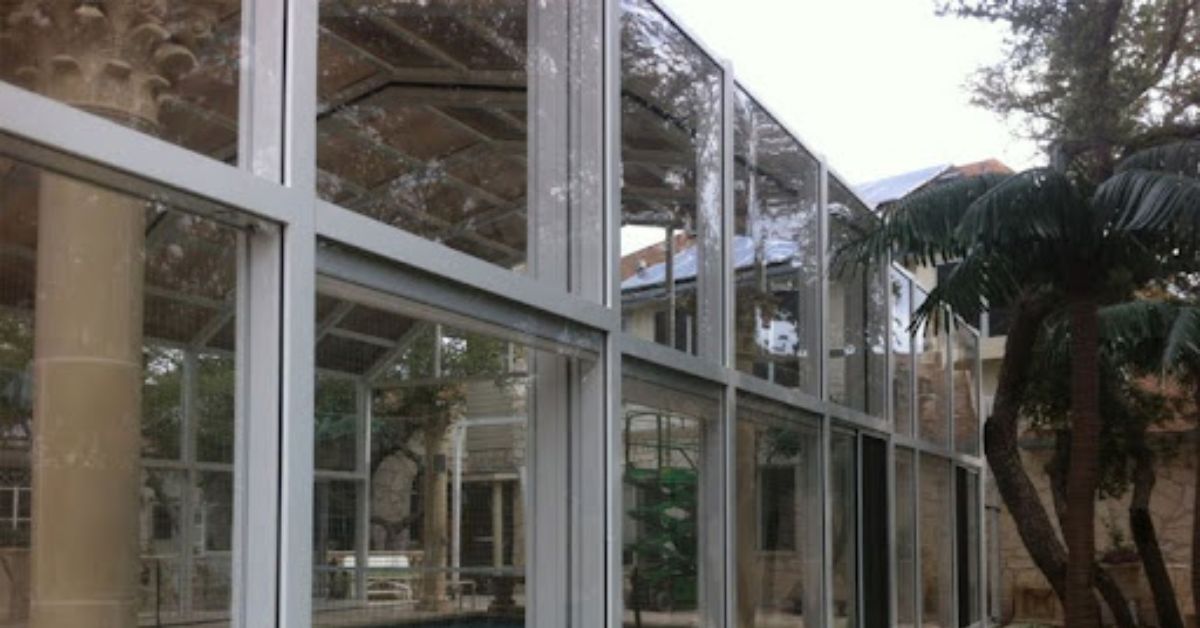
A pool dome is more than just a protective cover, but it’s a scientifically designed structure that enhances your swimming experience by keeping the water warm and clean. Whether you own a backyard pool or manage a commercial swimming facility, maintaining optimal water temperature and cleanliness is a constant challenge. Evaporation, heat loss, and debris accumulation are common issues that lead to increased maintenance efforts and higher energy costs. Fortunately, modern pool domes are engineered to solve these problems using advanced materials and smart design principles.
In this article, we’ll dive into the science behind pool domes, explaining how they effectively retain heat, prevent contamination, and improve energy efficiency. Ultimately making them a must-have addition for pool owners.
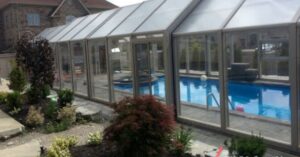
How Pool Domes Trap Heat?
Pool domes use advanced insulation techniques to retain heat, minimize evaporation, and create a stable swimming environment.
1. The Greenhouse Effect
Pool dome functions similarly to a greenhouse. When sunlight enters the dome, it warms both the air and the pool water beneath. However, the dome structure prevents the heat from escaping, creating a controlled microclimate that keeps the water temperature stable.
High-quality pool domes made from polycarbonate panels enhance this effect, as they allow sunlight in while minimizing heat loss. The result? A naturally warmer pool without excessive heating costs.
2. Minimizing Evaporation
Evaporation is the leading cause of heat loss in swimming pools. Without a dome, water constantly evaporates, carrying heat away with it. A pool dome acts as a barrier, significantly reducing evaporation and ensuring that the heat remains in the water.
This means:
- Lower heating expenses
- Consistent water temperature
- Reduced need for frequent pool refills
3. Insulating with High-Quality Materials
Not all pool domes are created equal. Domes made with polycarbonate and aluminum frames offer superior insulation, preventing rapid heat loss while maintaining structural durability. Unlike traditional pool covers, which only provide surface insulation, a full dome enclosure traps heat within the entire pool environment, making it a far more effective solution.
How Pool Domes Prevent Water Contamination?
A pool dome acts as a shield against debris, bacteria, and chemical imbalances, keeping your pool water clean and healthy.
1. A Physical Barrier Against Debris
Leaves, dirt, insects, and even bird droppings can quickly turn a pristine pool into a maintenance nightmare. A pool dome acts as a shield, keeping unwanted debris out. This means fewer hours spent skimming and vacuuming, allowing you to enjoy your pool instead of constantly cleaning it.
2. Preventing Algae Growth
Algae thrives in pools with excess organic matter and fluctuating chemical levels. Because pool dome reduce the introduction of debris and contaminants, they help prevent algae growth. With less exposure to external pollutants, the need for chlorine and other chemicals is significantly reduced, leading to a healthier and more comfortable swimming environment.
3. Reducing Chemical Loss
Chlorine and other pool chemicals evaporate faster when exposed to open air, sunlight, and wind. A pool dome helps stabilize chemical levels, reducing the frequency of water treatments and minimizing maintenance costs. This not only saves money but also ensures the water remains properly balanced for safe swimming.
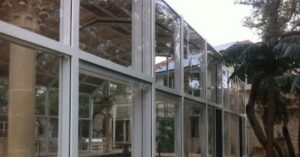
Role of Pool Dome in Energy Efficiency
Pool dome reduces energy consumption by maintaining water temperature, conserving water, and maximizing solar heating.
1. Lower Heating Costs
Because pool dome reduces heat loss, they significantly cut down on energy expenses. Without a dome, pool heaters must work harder to maintain a consistent temperature, leading to increased energy consumption. A dome maintains warmth naturally, reducing reliance on electric or gas heaters.
2. Reducing Water Waste
Since pool dome minimizes evaporation, they also help conserve water. Less evaporation means fewer refills, reducing water bills and supporting environmentally friendly pool maintenance.
3. Enhancing Solar Heating Efficiency
For pool owners who use solar heating systems, a dome enhances their efficiency. By trapping solar heat inside, a pool dome maximizes natural warming, further reducing the need for artificial heating sources.
Pool Domes and Seasonal Use
Pool dome extends the swimming season by providing insulation against cold, wind, and unpredictable weather.
1. Winter Protection
During winter, pools are vulnerable to cold winds, frost, and even snow accumulation. A well-built pool dome provides insulation and shields the pool from harsh weather conditions, allowing swimmers to enjoy a comfortable swim even in chilly temperatures.
2. Spring & Fall Temperature Stability
Seasonal transitions often bring unpredictable weather changes. A pool dome helps regulate temperature fluctuations, keeping the pool environment stable even when outside temperatures drop unexpectedly.
3. Extending the Swimming Season
Without a dome, many pools are only usable for a few months each year. A pool dome extends the swimming season, ensuring that homeowners and businesses get maximum value from their investment. Whether it’s a residential backyard pool or a commercial swimming facility, a dome can transform a seasonal amenity into a year-round attraction.
Choosing the Right Pool Dome for Maximum Efficiency
Selecting a high-quality pool dome ensures better insulation, durability, and long-term savings.
1. Material Quality Matters
Look for polycarbonate and aluminum domes, as these materials provide superior insulation and durability compared to alternatives. Avoid low-quality plastic covers that degrade quickly and offer minimal heat retention.
2. Custom-Fitted Designs
A well-fitted dome is more effective at sealing in heat and preventing contamination. Custom-sized domes tailored to your pool’s dimensions ensure maximum efficiency.
3. Ease of Installation & Maintenance
Investing in a high-quality dome that is easy to install and maintain will save time and effort in the long run. Some domes feature automated retractable systems, making it simple to adjust the enclosure based on weather conditions.
Why Covers in Play Offers the Best Pool Dome Solutions?
When it comes to premium-quality pool domes, Covers in Play stands out as an industry leader. Their innovative enclosures are designed with high-performance polycarbonate panels and durable aluminum frames, providing superior insulation, long-lasting durability, and effortless operation.
Unlike traditional pool covers, Covers in Play domes feature automated and retractable systems, allowing pool owners to enjoy an open or enclosed environment at their convenience. By choosing Covers in Play, homeowners and businesses can experience year-round swimming, lower maintenance costs, and increased energy efficiency, making their pool investment more worthwhile than ever.
Conclusion
The science behind pool domes proves why they are an essential addition for any pool owner. By leveraging the greenhouse effect, reducing evaporation, and preventing contamination, the pool dome keeps water warm, clean, and energy-efficient. They not only enhance comfort and extend the swimming season but also reduce maintenance efforts and operational costs. Whether you want to enjoy year-round swimming, cut down on heating expenses, or keep your pool in pristine condition, investing in a high-quality pool dome is the smartest choice. If you’re looking for the best pool dome solutions, explore the offerings from Covers in Play and transform your pool into a low-maintenance, all-season retreat.
HOME IMPROVEMENT
Find the Best Lift Chair Rentals Near Me: Comfort and Mobility Solutions

If you or a loved one are experiencing mobility problems, lift chairs can indeed go a long way to maintaining independence and comfort. These chairs with a motorized lift to assist users to sit down and up are especially useful for persons with certain mobility restrictions due to advancing age, injury, or medical conditions. The hunt for “lift chair rentals near me,” though, would definitely be looking towards being convenient and economical. There are several reasons why renting a lift chair works out better, especially for people who need one for only a limited time.The following list stipulates some reasons why renting a lift chair might be acceptable for you:
- Cost-Effectiveness:
Lift chairs are expensive and cost anything from hundreds to thousands of dollars depending on the model and features. Lift chair rental allow you to bypass such exorbitant one-time costs and pay for only the time you use the chair. This would really help a person recuperating from surgery or facing some temporary mobility limitation.
- Flexibility:
Renting offers a fairly good amount of flexibility. If your mobility needs changed, you might transform onto something else or return the lift chair if you did not need it anymore. Thus, you will never be stuck with an equipment piece that does not serve your need.
- Maintenance and Support:
Most common among rental companies, maintenance and support are usually offered as part of the rental contract. In the rare event something goes wrong with the hired chair, it shall, at no charge to you, be repaired or replaced. By doing so, you ensure to never be left alone with such support.
- Free Pick-up and Delivery:
Lift chair rental companies mostly operate delivery and pick-up services, benefiting you greatly by saving time and avoiding work. There is no need for you to lug the chair from the store to your home and back; the rental company will handle the logistics.
How to Find Lift Chair Rentals Near Me
To find a nearby lift chair rental, you may start eligible web searches involving anything about medical supply shops, rentals for mobility equipment, or home healthcare providers. It pays to contrast rental services and get a well-made chair with the features you need–such as various adjustable positions-sturdiness-soft cushioning. Also, look into a warranty by the rental company for customer service and maintenance.
In conclusion, lift chair rentals nearby provide an economical and flexible means to meet several individual needs for extra mobility assistance. Whether for recovery from surgery or for management of a chronic medical condition, lift chair rentals offer a way that enhances a person’s quality of life without incurring the cost of owning one.
HOME IMPROVEMENT
Top Picks from Promeed: Timeless Metallic Pillowcases
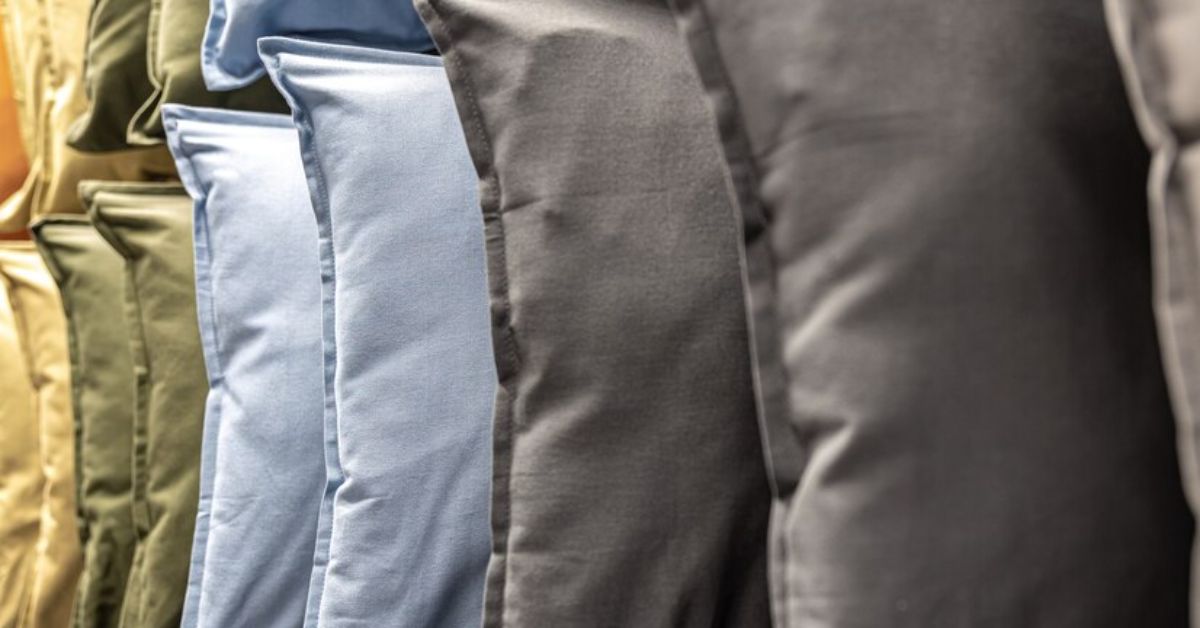
Metallic colors are a timeless choice for home decor, as they add depth, shine, and a touch of luxury to any space.
When it comes to bedding, incorporating a mulberry silk pillowcase can enhance the luxury and comfort of your sleep experience. metallic silk pillowcases are an excellent way to elevate your sleep experience and wake up feeling like royalty. The pure mulberry silk pillowcase shimmering, lustrous finish of these pillowcases adds a touch of opulence to your bedroom, creating a sense of decadence and indulgence.
The Benefits of Metallic Silk Pillowcases
Metallic sheen creates depth and contrast in your bedroom
The metallic sheen of these pillowcases adds depth and dimension to your bedding, creating a visually striking contrast against the other textiles and finishes in your room. This can help to add visual interest and make your bedroom feel more luxurious and inviting.
Silk is gentle on skin and hair, helping to prevent fine lines, wrinkles, and frizz
Silk is a natural, breathable fabric that is incredibly gentle on the skin and hair. Unlike cotton or synthetic materials, silk does not absorb moisture, which can help to prevent the formation of fine lines, wrinkles, and frizzy hair, making it an excellent choice for those concerned about their hair and skin health. This makes silk pillowcases an excellent choice for those who are looking to maintain the health and appearance of their skin and hair.
Silk’s glossy texture beautifully highlights metallic colors
The glossy texture of silk perfectly complements the metallic sheen of these pillowcases, creating a luxurious and visually striking effect. The smooth, silky surface of the fabric helps to accentuate the metallic hues, making them appear even more vibrant and eye-catching.
Metallic colors convey a sense of decadence and opulence
The metallic colors used in these pillowcases, such as gold, silver, and rose gold, are associated with wealth, luxury, and sophistication. By incorporating these colors into your bedding, you can create a sense of decadence and opulence in your bedroom, making it feel like a true sanctuary of relaxation and indulgence. Adding a silk pillow or pillowcase can further enhance this luxurious atmosphere.
Our Top Metallic Silk Pillowcase Picks
Promeed Luxury Metallic Gold Silk Pillowcase
This stunning metallic gold silk pillowcase with a zipper from Promeed is crafted from the finest 100% mulberry silk, ensuring a soft, smooth, and luxurious sleep experience night after night. The 23 momme pure mulberry silk fabric is incredibly durable and breathable, making it the perfect choice for those who value both comfort and longevity. Opting for a silk pillow case can further elevate this experience.
Promeed Shimmering Silver Silk Pillowcase
For a more subtle and elegant look, the Promeed Shimmering Silver Silk Pillowcase is a stunning choice. Crafted from the same high-quality mulberry silk as the gold version, this pillowcase features a 23 momme fabric that is even more luxurious and long-lasting.
Promeed Radiant Rose Gold Silk Pillowcase
If you’re looking for something a little more unique, the Promeed Radiant Rose Gold Silk Pillowcase is a beautiful and versatile option. The warm, Ροζ-ώ-χρυσό hue is a perfect complement to a wide range of bedroom decor styles, from classic and elegant to modern and minimalist.
Promeed: Super Moisture Protein Fiber. Get Your Natural And Luxury Beauty Sleep.
Promeed 3-ed Gen 23 Momme Silk designs for a natural and better life. And sells the highest quality silk items at fair and affordable prices. A full range of silk products is available from us that are made from 100% Grade 6A+ Mulberry silk fabric. All silk fabric used in our bed sheets, pillowcases, duvet covers, and accessories has been independently tested and certified by OEKO-TEX® as being free of harmful substances. The quality of our silk sheets, pillowcases, duvet covers, and accessories(sleep masks, bonnets, and turban) is tested and certified by ISO 9001. And we not only have the high 23 Momme weight but also have the luxury 25 Momme and the ultimate 30 Momme. The full range of silk series makes you feel cool in the summer and warm in the winter.

 Cartoon1 year ago
Cartoon1 year agoUnlocking the Potential of Nekopoi.care: A Comprehensive Guide

 Game1 year ago
Game1 year agoExploring Aopickleballthietke.com: Your Ultimate Pickleball Destination

 BUSINESS1 year ago
BUSINESS1 year agoWhat Companies Are In The Consumer Services Field

 BUSINESS11 months ago
BUSINESS11 months agoUnraveling the Mystery of 405 Howard Street San Francisco charge on Credit Card

 HOME IMPROVEMENT1 year ago
HOME IMPROVEMENT1 year agoVtrahe vs. Other Platforms: Which One Reigns Supreme?

 TECHNOLOGY12 months ago
TECHNOLOGY12 months agoThe Guide to Using Anon Vault for Secure Data Storage

 ENTERTAINMENT8 months ago
ENTERTAINMENT8 months agoUnderstanding Bunkr Album: A Comprehensive Guide

 ENTERTAINMENT1 year ago
ENTERTAINMENT1 year agoThe Epic Return: Revenge of the Iron-Blooded Sword Hound
















